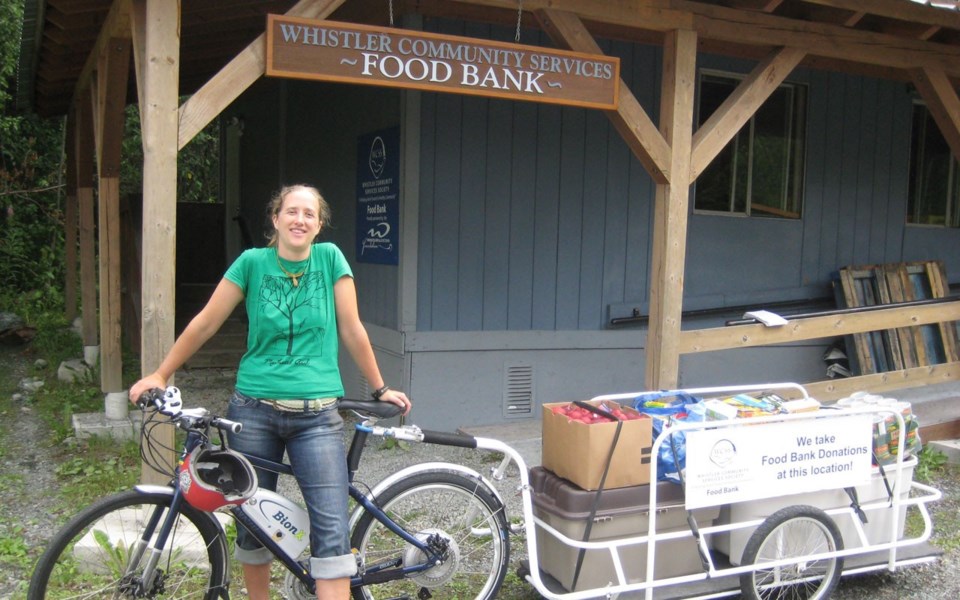The season of giving and getting is just about upon us.
It really feels too early to be honest. The assault that we euphemistically call Black Friday and Cyber Monday announced in blaring fashion this week that it's time to shop, shop, shop.
Then as we said goodbye to Monday (and our money), sanity returned with the annual GivingTuesday celebration.
GivingTuesday is a global giving movement that has been driven by individuals, charities, businesses and communities across Canada and in countries around the world. More than 100 countries participated, and since 2013, over 6,000 Canadian charities, businesses and community groups have used GivingTuesday to rally generosity and help make the world a better place in countless ways.
Across Canada, 30 civic movements have mobilized around this annual event, and here in Whistler at least 16 organizations, from AWARE to Playground Builders, are taking part.
It's not all about giving money — though hard currency is always useful to organizations. You can choose to give time to the organization of your choice or donate food to the Whistler Food Bank, for example.
Or you could simply take part in some random acts of kindness. Know a mom that could use a break from the kids? Or how about helping a neighbour with chores? Or volunteer?
It's likely one of the reasons the need for this event is growing in Canada is due to the increasing pressure on Canadians across a wide spectrum to reach out for support for everyday living.
The latest Food Banks Canada annual hunger count revealed that in B.C., there was a 3.4-per-cent increase in use in 2016 compared to 2015 — the third year there has been a rise. The report found that 103,400 people used a food bank. Children accessed food banks at disproportionately high levels, according to the count, which reported that 32 per cent of B.C. food bank users in 2016 were minors.
In Whistler, statistics from Whistler Community Services Society show that in 2016, 2,084 people used the food bank — 733 were children.
There are myriad reasons people find themselves in need of help with food and other necessities, but there can be little doubt that a growing part of the equation is the cost of housing.
People are having to chose between paying rent or bills and eating.
Last week, we saw the announcement by the federal Liberal government of a new national housing strategy.
But it failed completely to address one of the real issues facing Canada and indeed Whistler — housing affordability, not just affordable housing. (The strategy does at least recognize housing as human right, and it contained some much-needed help for vulnerable people.)
Wednesday saw the release of the Canada Mortgage and Housing Corporation's 2017 Rental Market Survey. Sadly, it does not look at Whistler — reaching only as far as Squamish — but what it found, while hardly news, is still alarming. Rental rates in Vancouver surged 6.2 per cent over the last year with average monthly rent for a two-bedroom apartment in new and existing buildings in Metro Vancouver costing $1,552. Anecdotally, I would say Whistler's rental rates are even higher.
The average rate across Canada for a two-bedroom rental apartment is $989.
The middle class is being squeezed out of centres of employment like Whistler. We are more fortunate than most as we have a local government striving to find solutions for worker housing.
Whistler is under pressure. One only has to read the Vital Focus: Growth, change and belonging report released earlier this year by the Community Foundation of Whistler to see the people behind the numbers.
As the success of the resort has grown, so has the number of people coming here for work — not to "live the dream," points out the report. Between 2008 and 2017 the number of new immigrants landing in Whistler increased by 14 per cent a year, for example.
We also have one of the highest rates of population growth in B.C. Between 2011 and 2016, the number of kids in schools increased by 20 per cent.
Some other highlights include:
• In 2015, 16 per cent of permanent residents reported incomes below "living costs" levels while that rose to 39 per cent in 2016;
• The number of people in Whistler living below living income is increasing dramatically;
• The number of seniors has grown and the number of children under 15 has grown.
As you consider these factors impacting our community, remember that giving isn't confined to GivingTuesdays — it can happen all year round.




